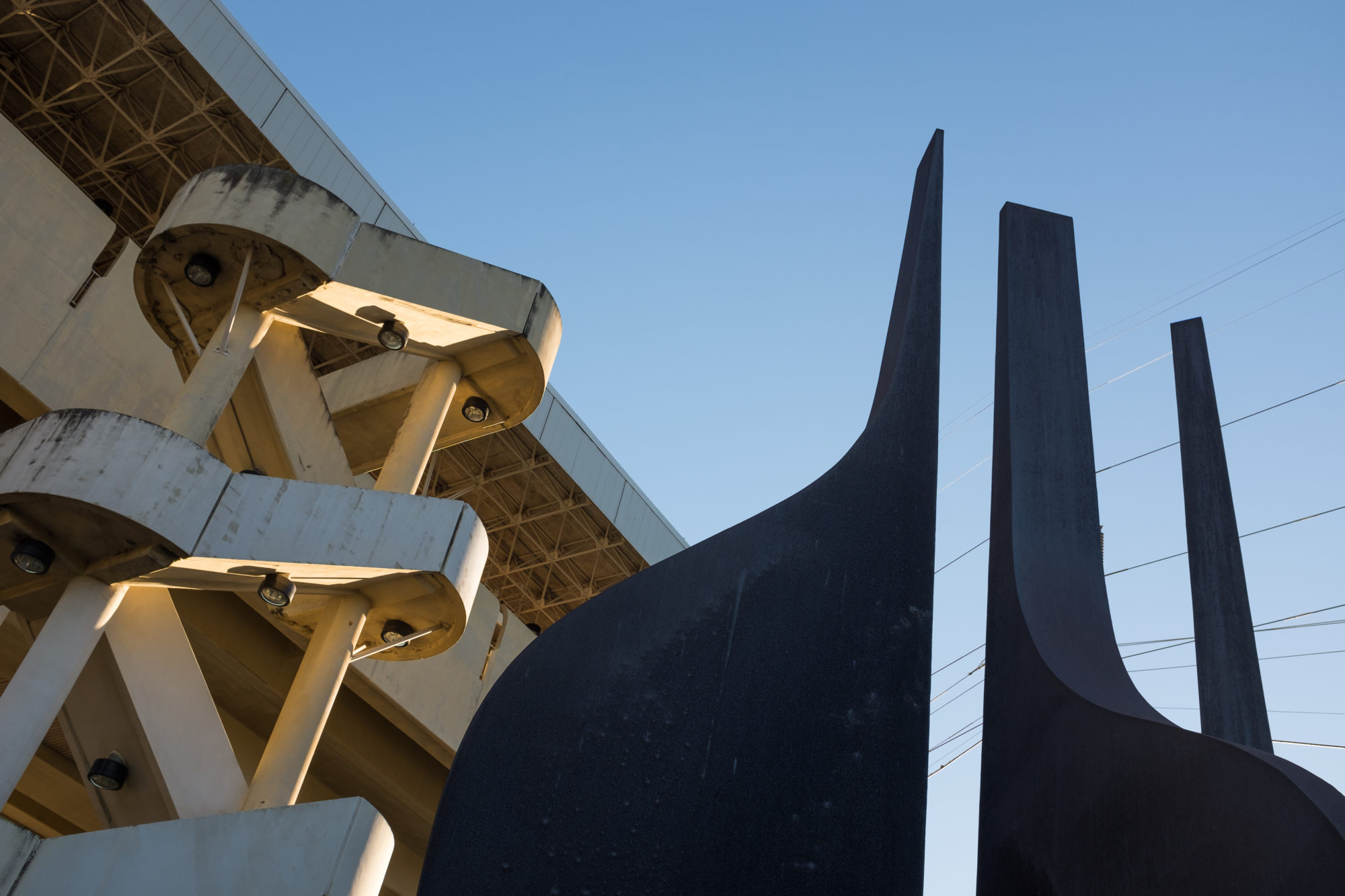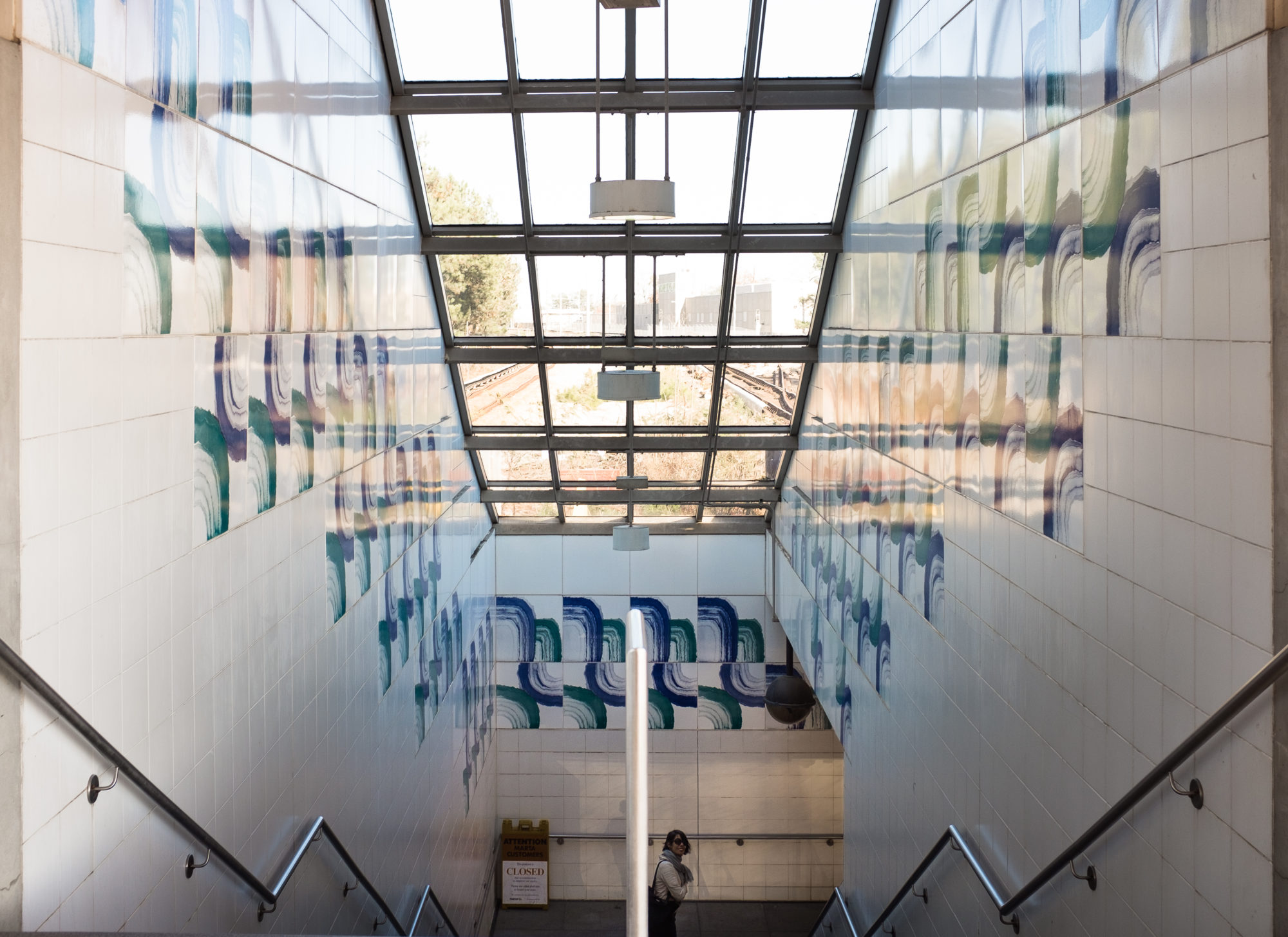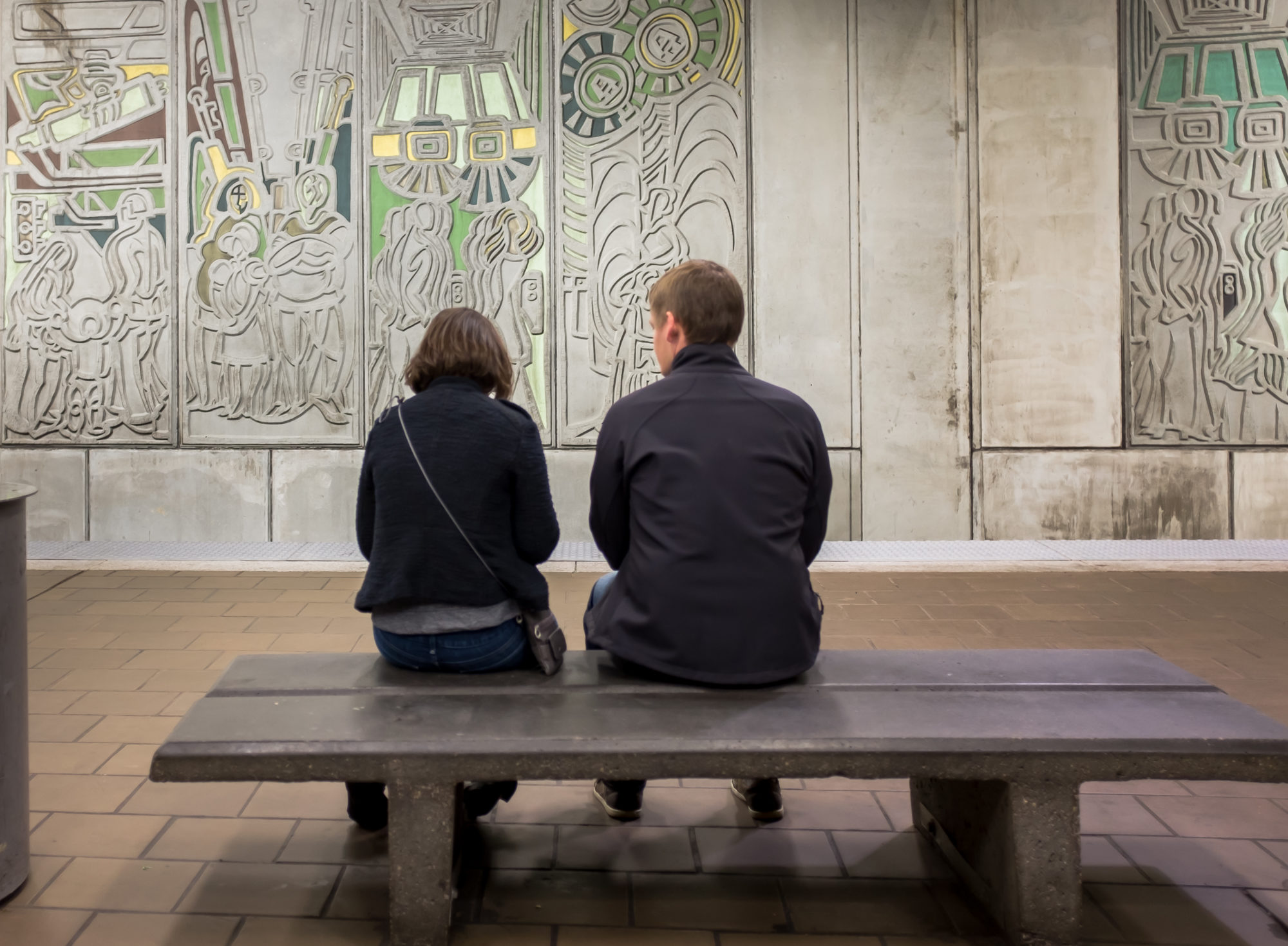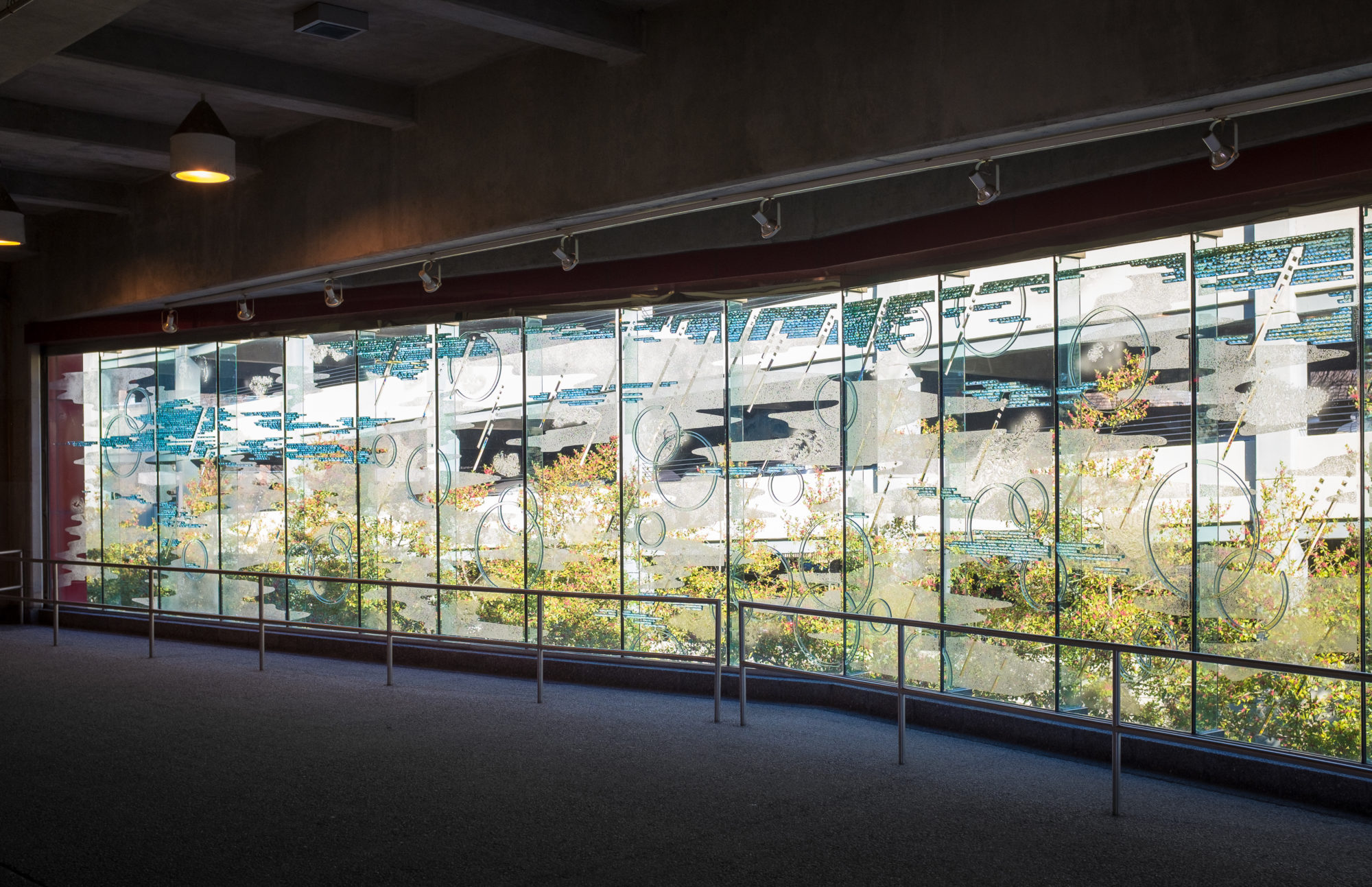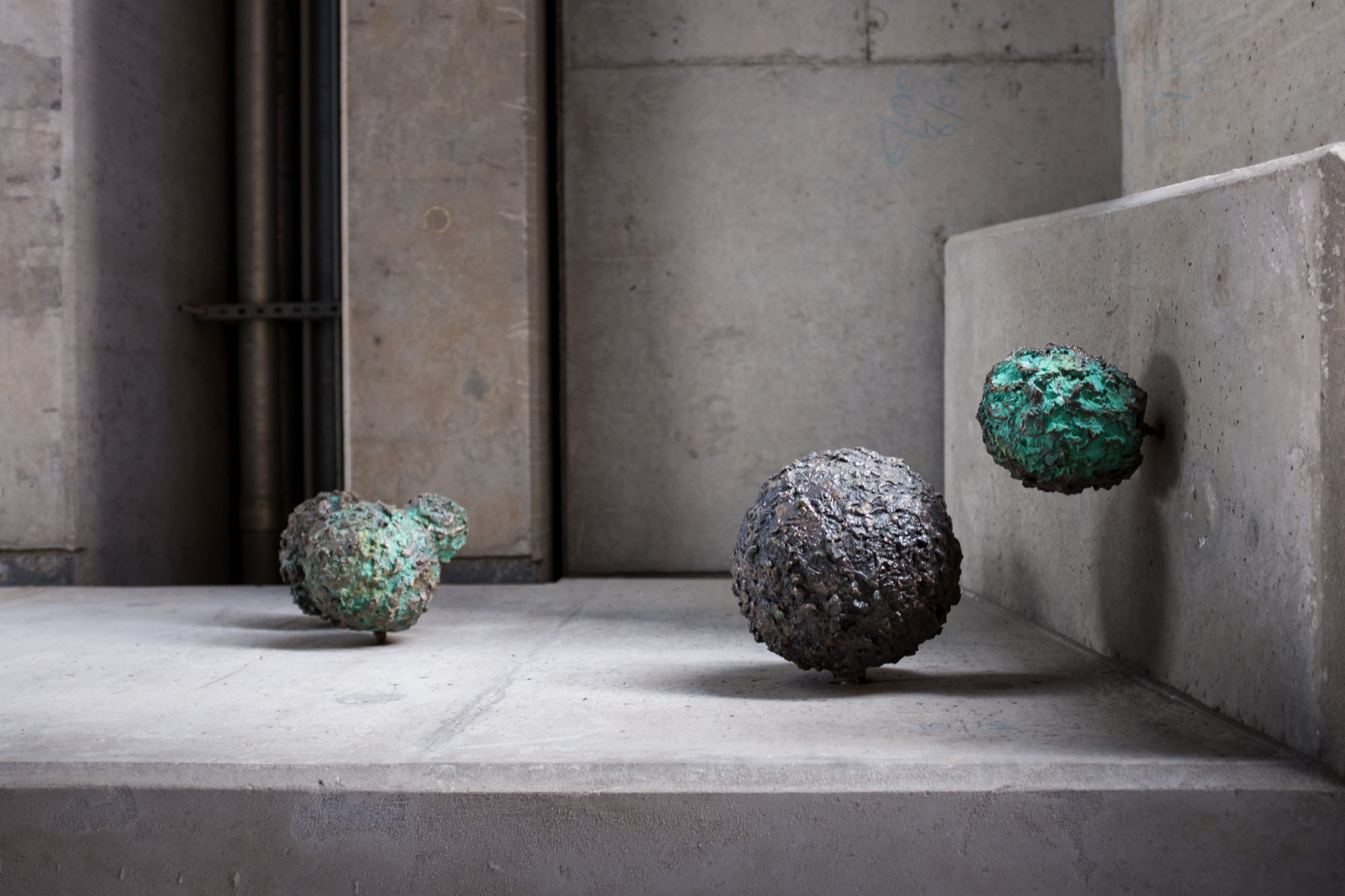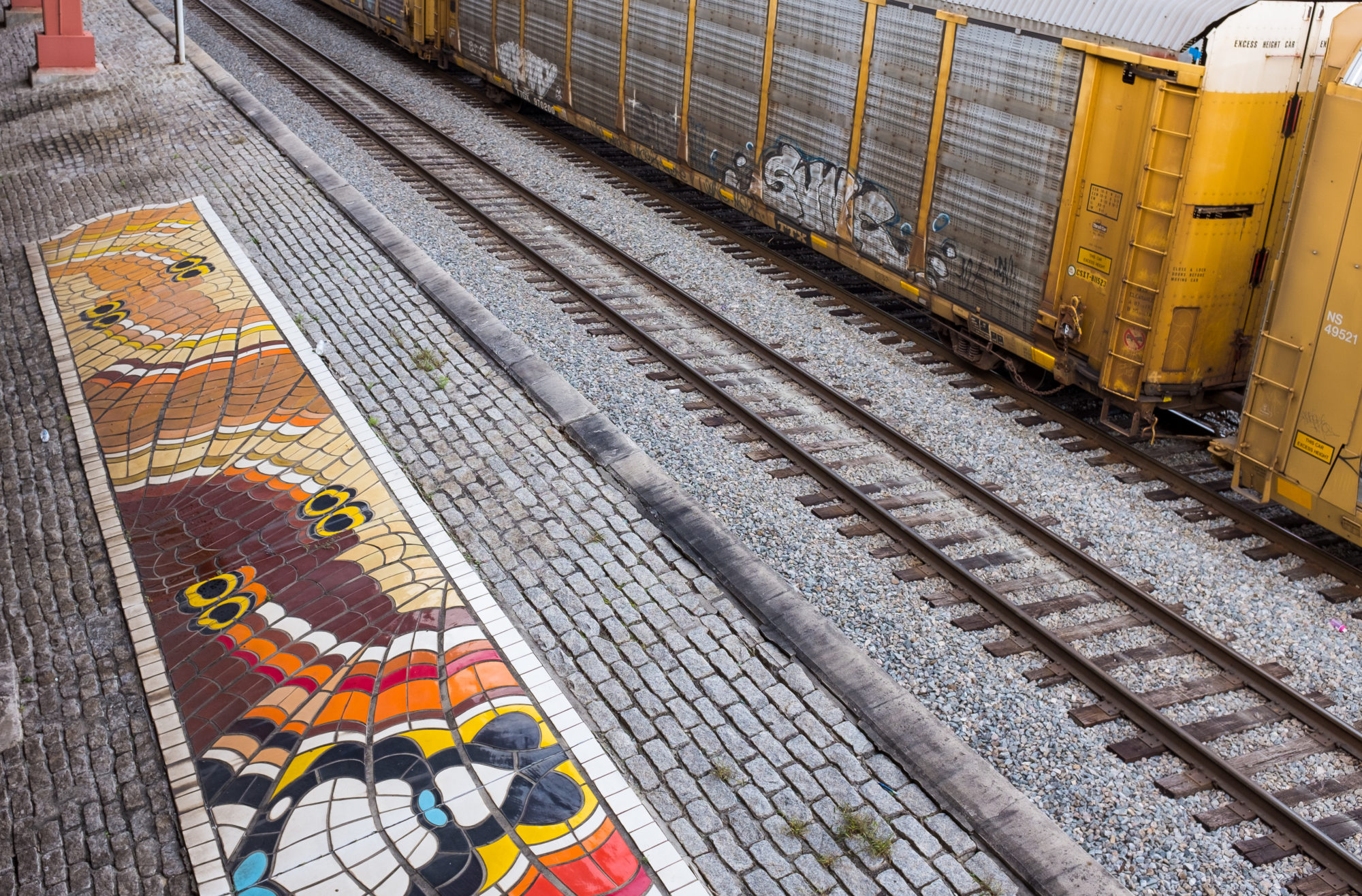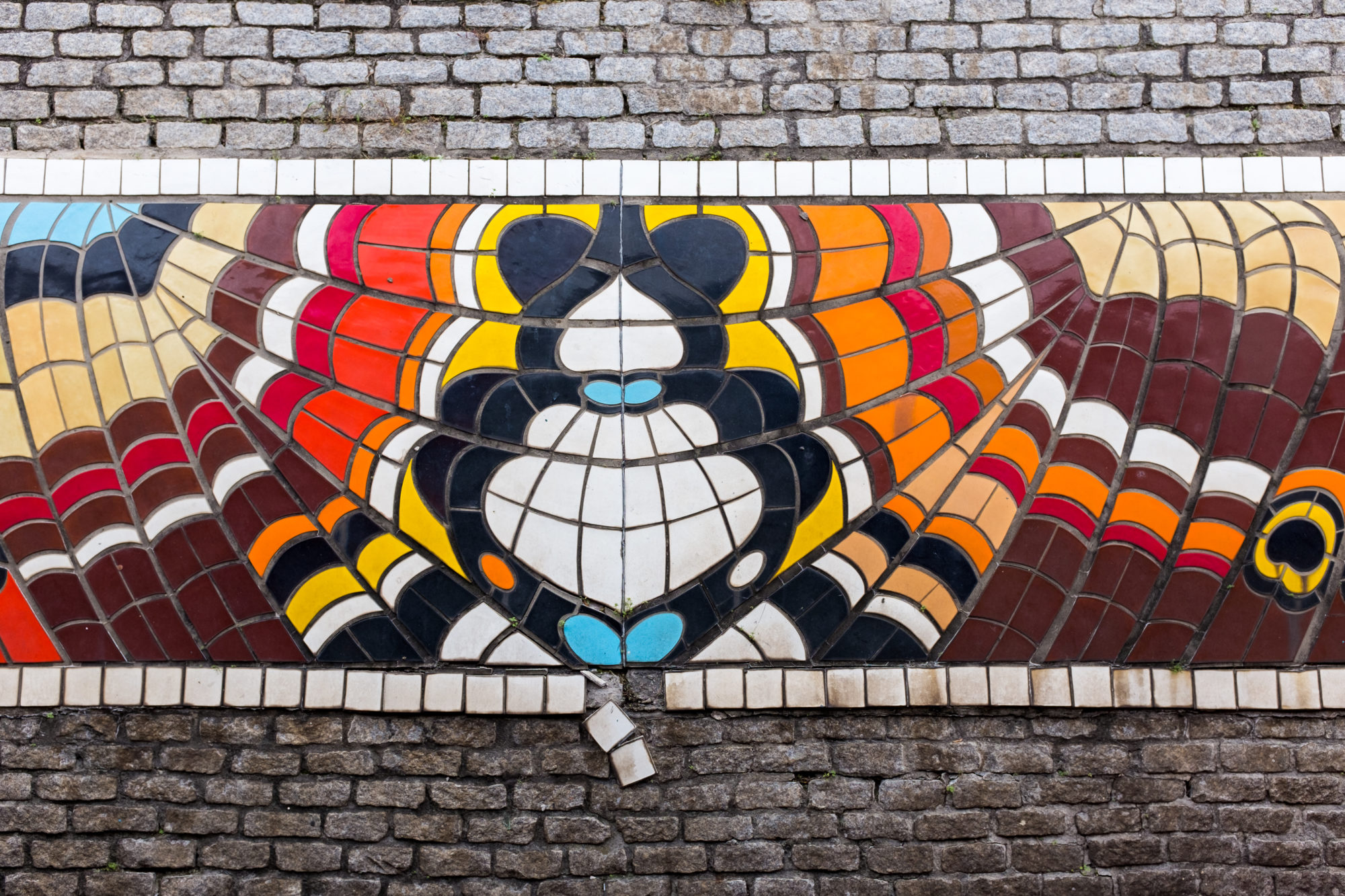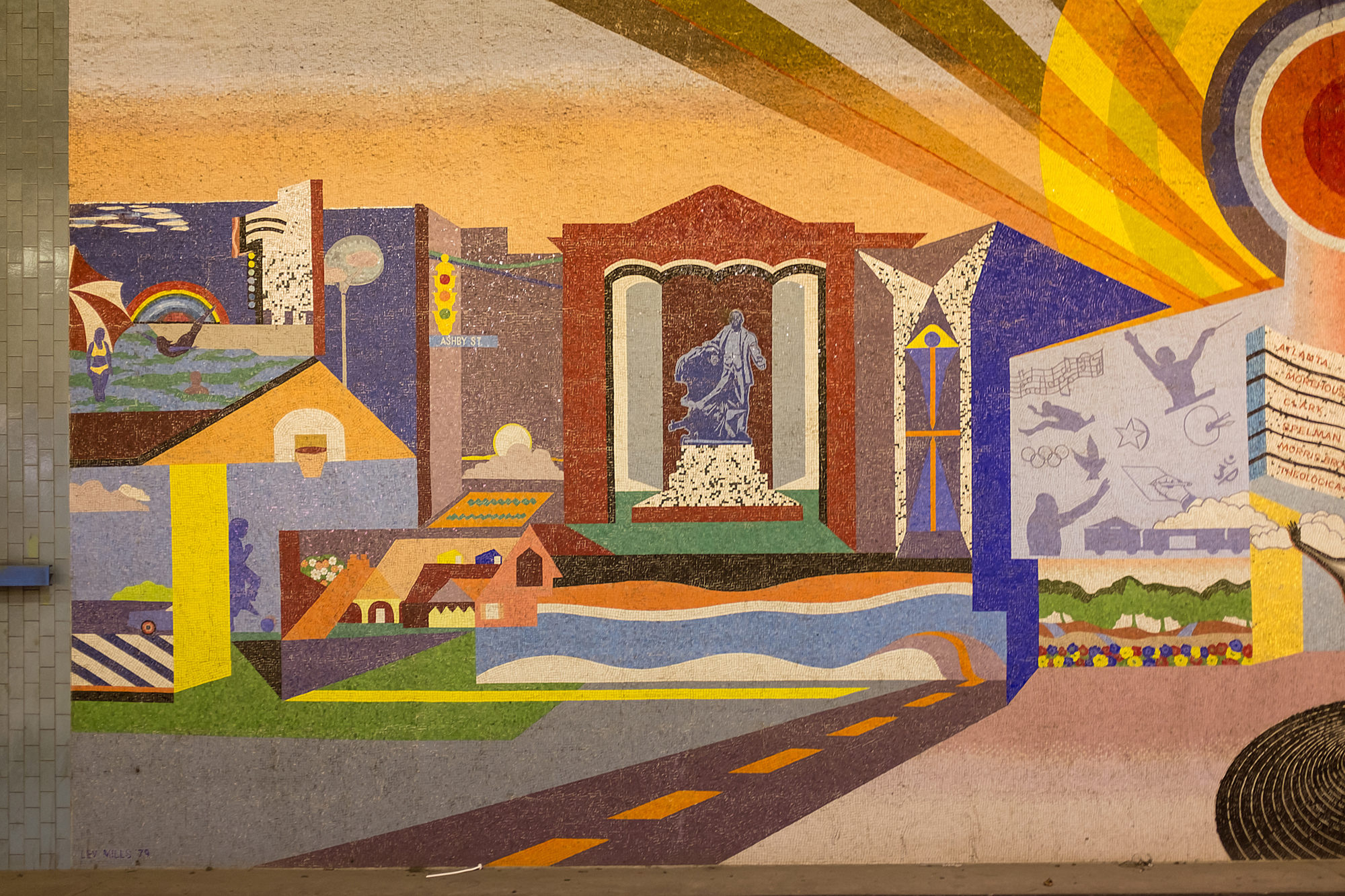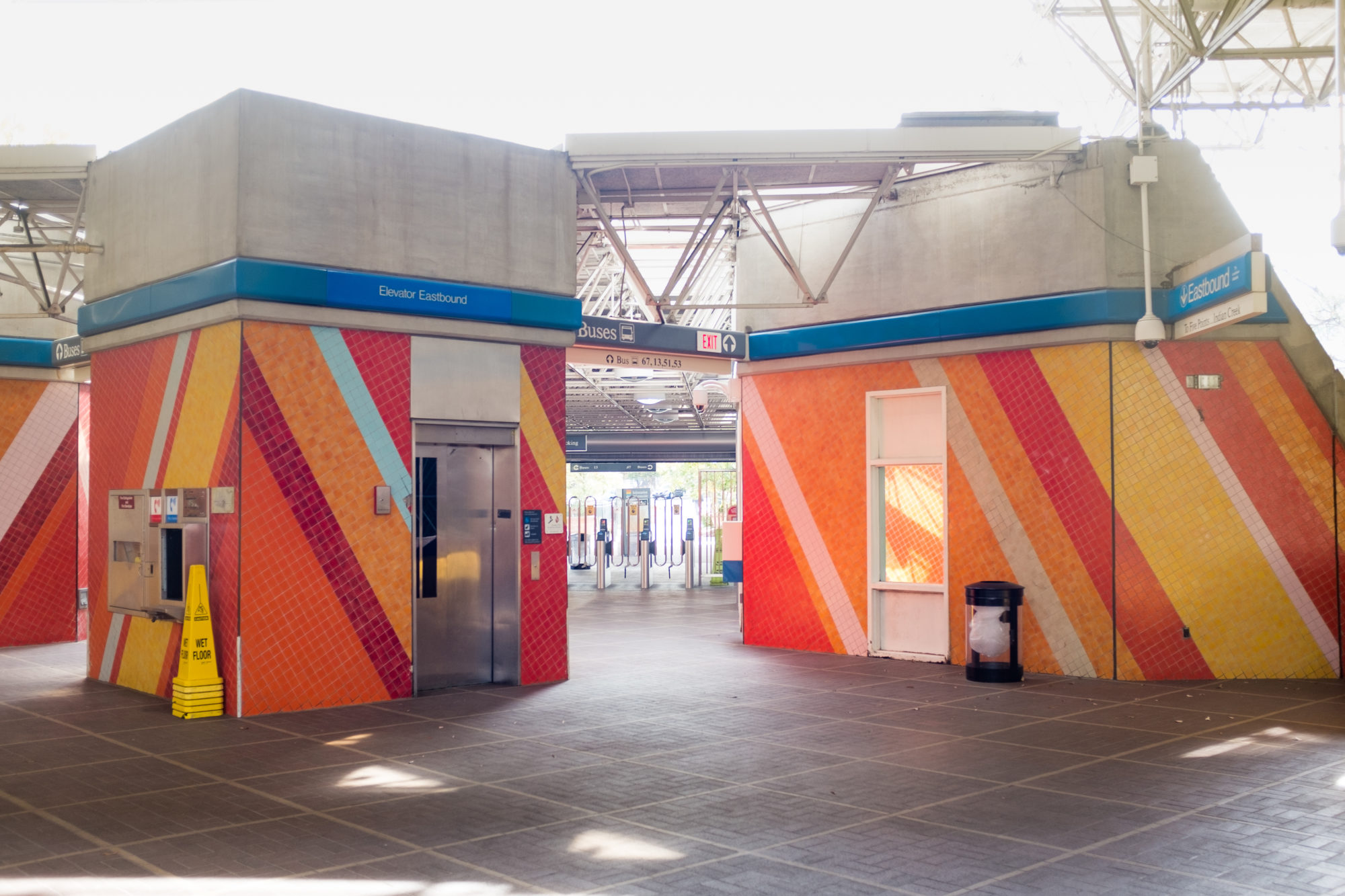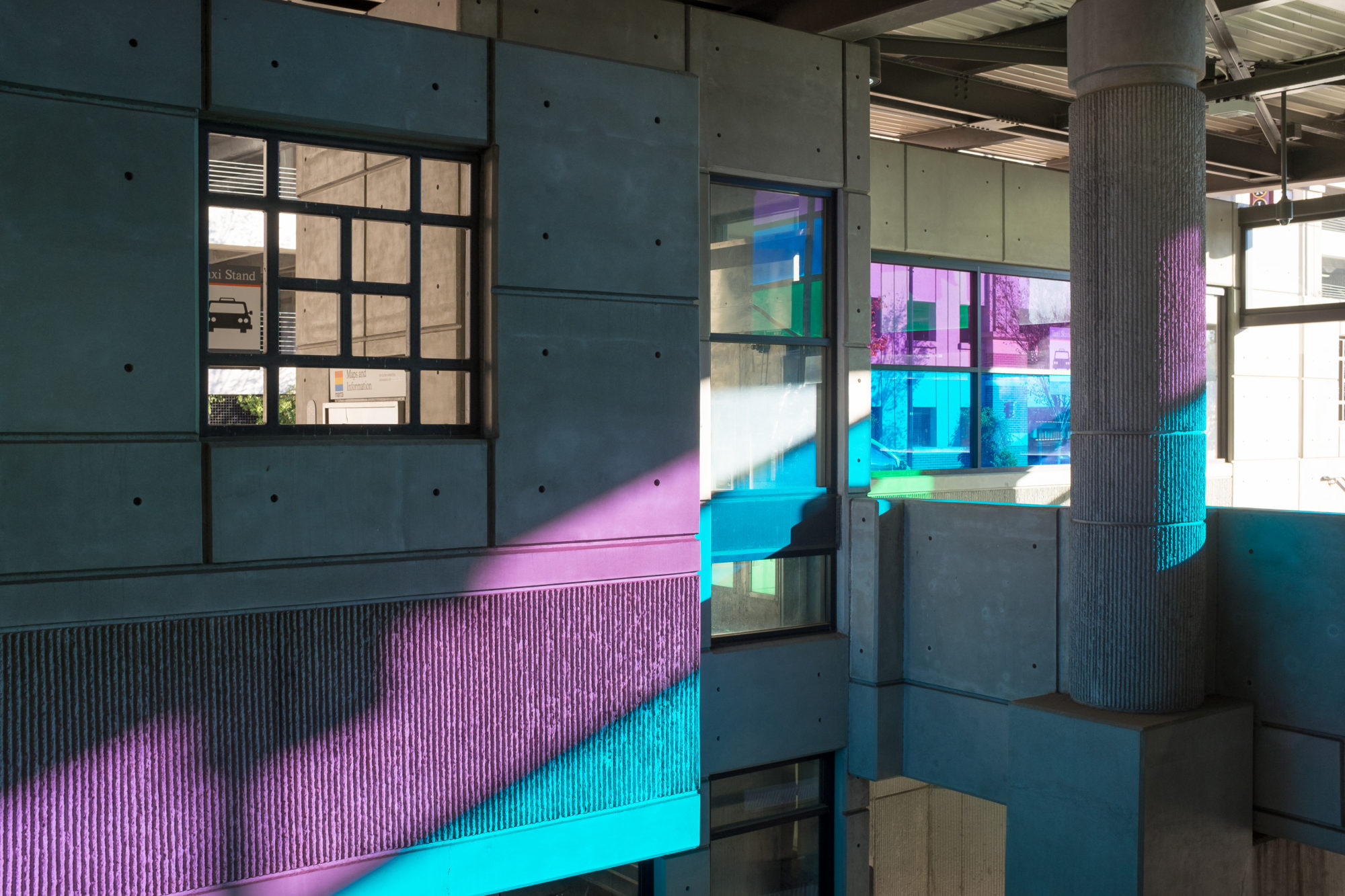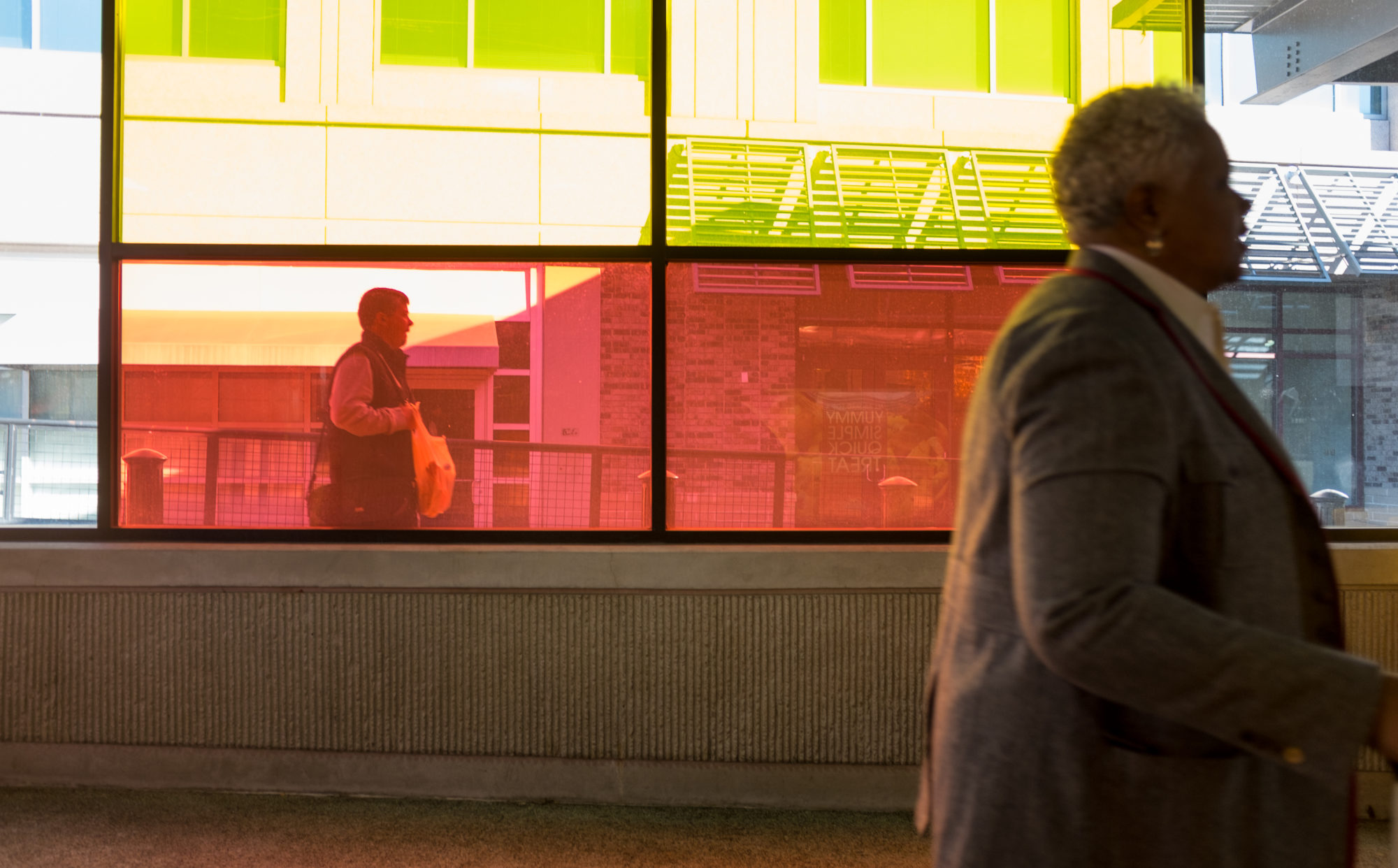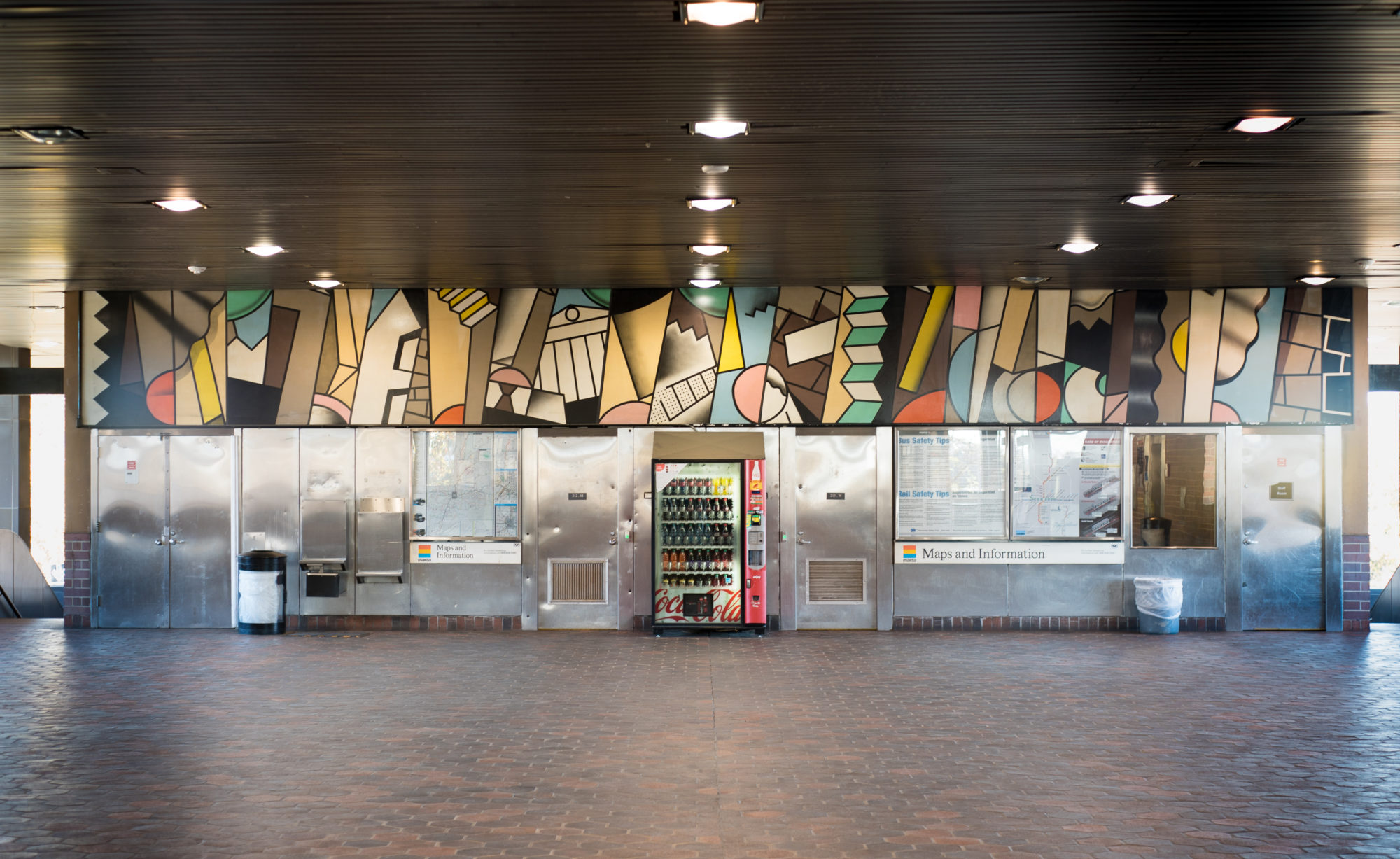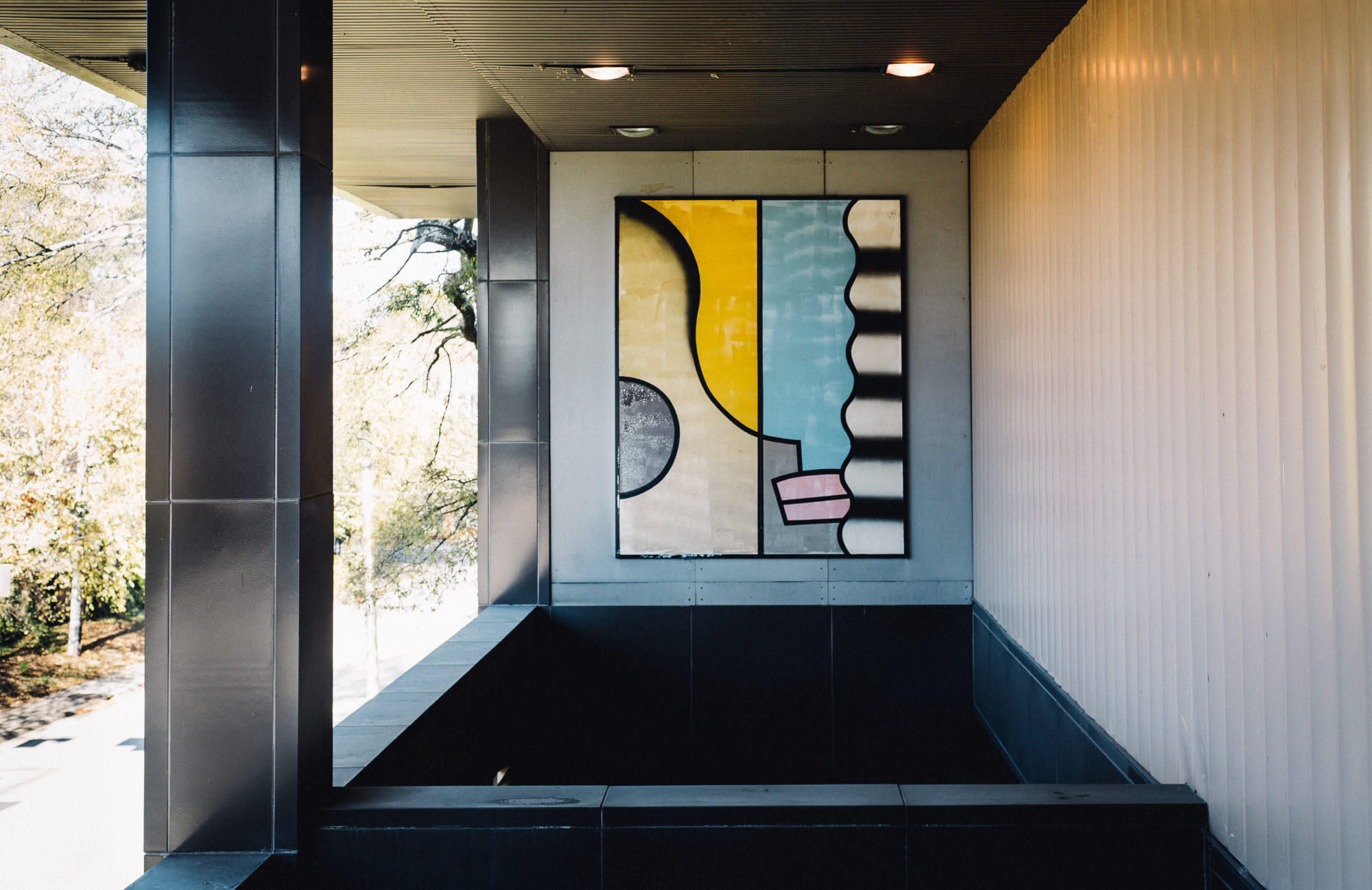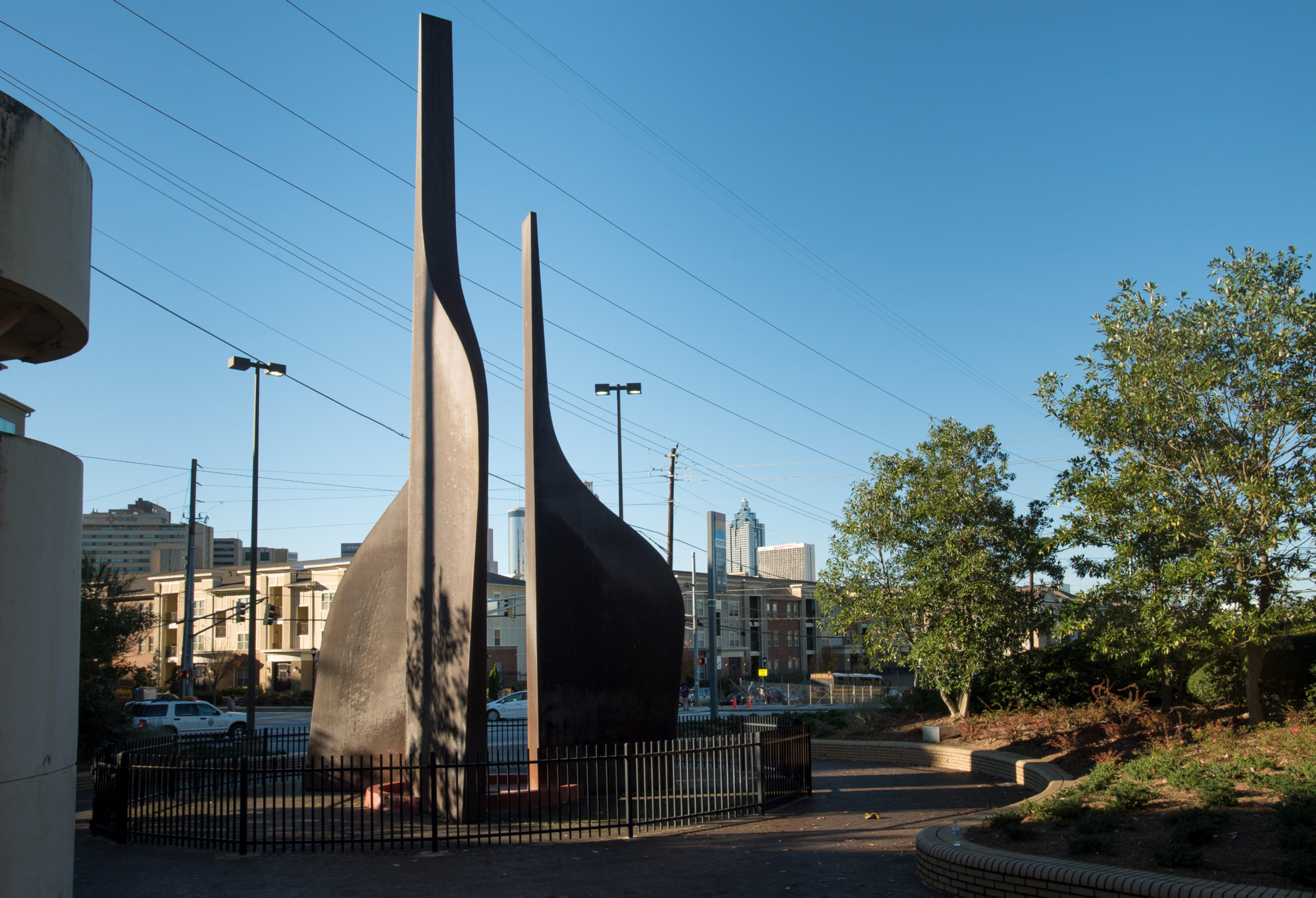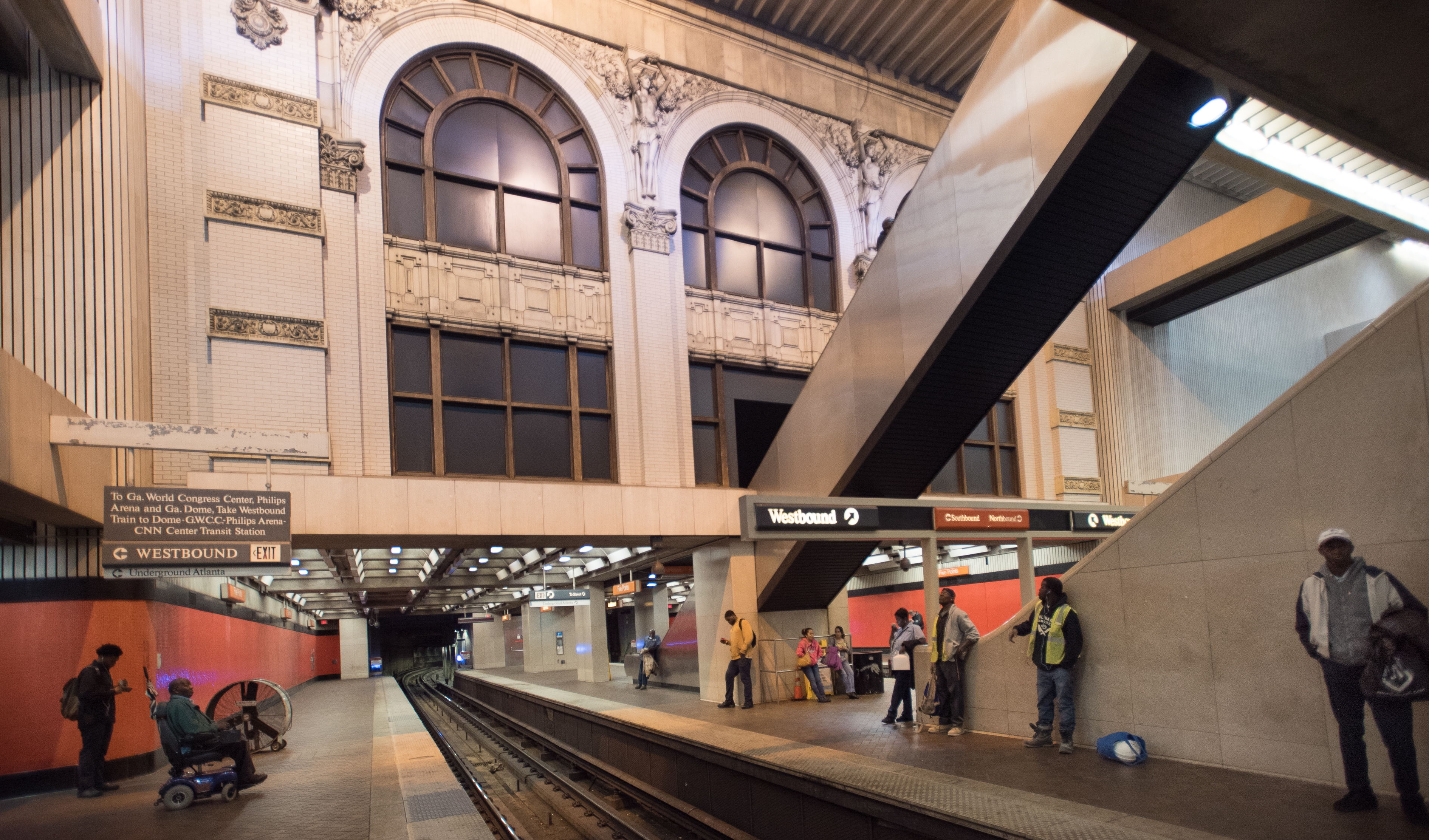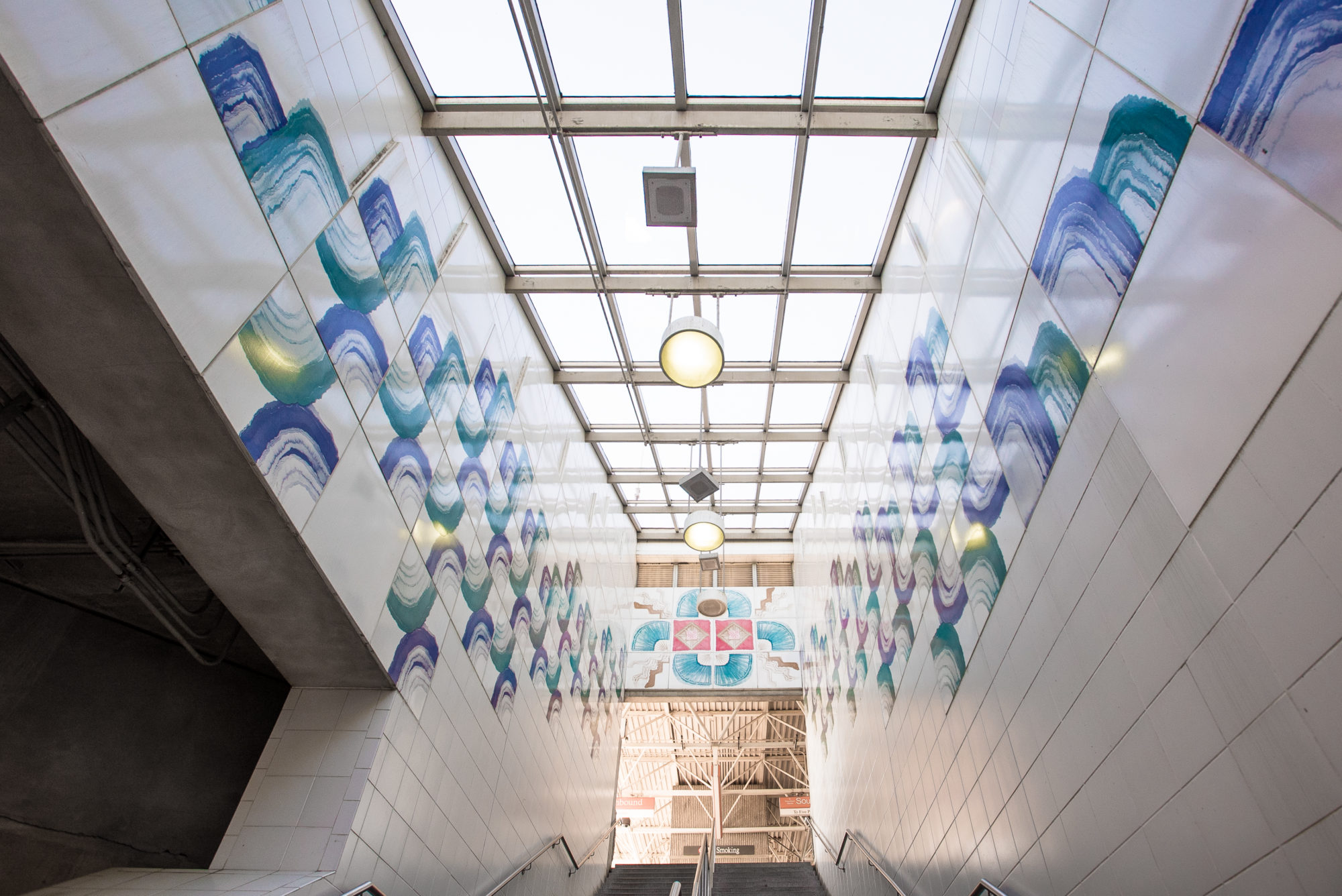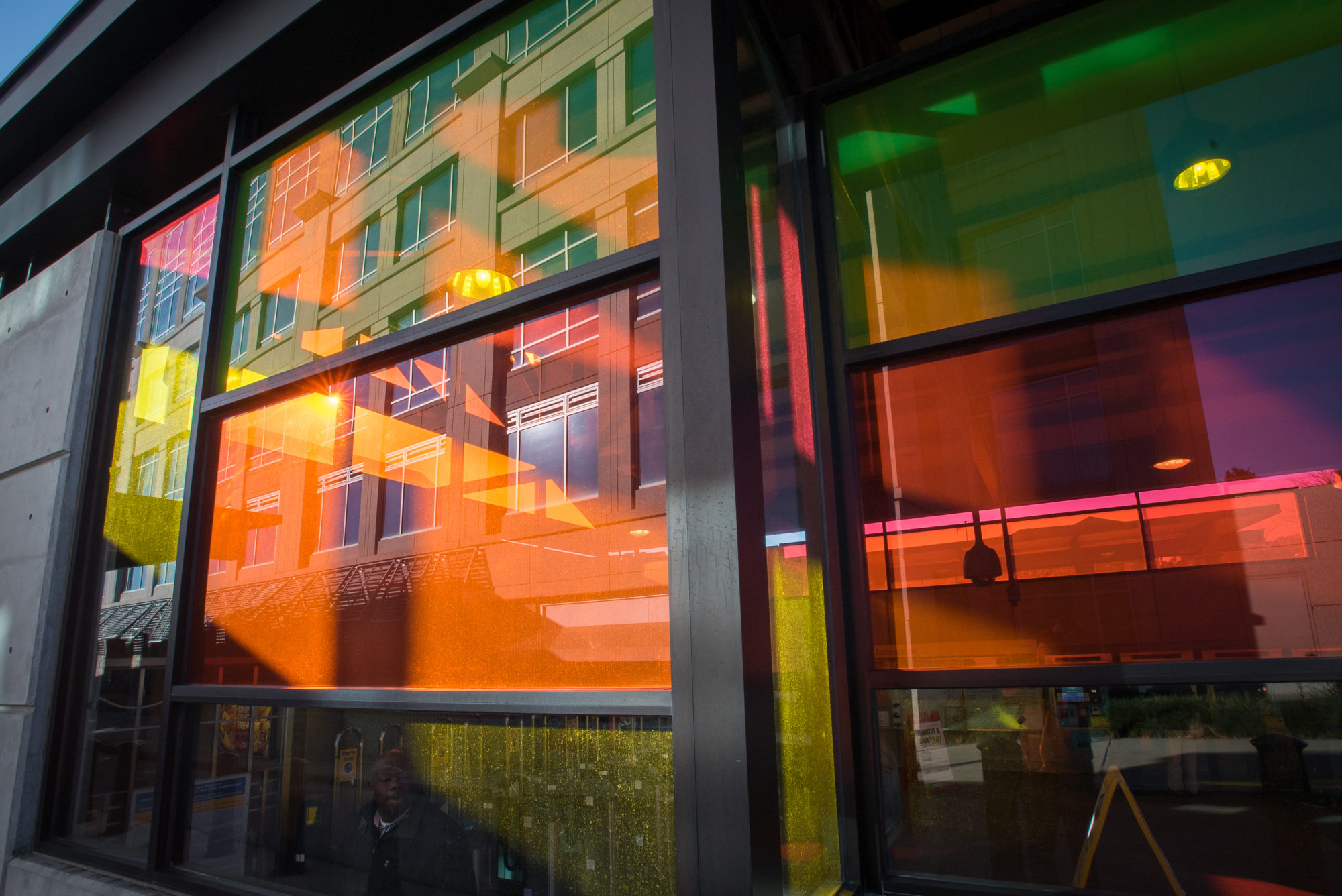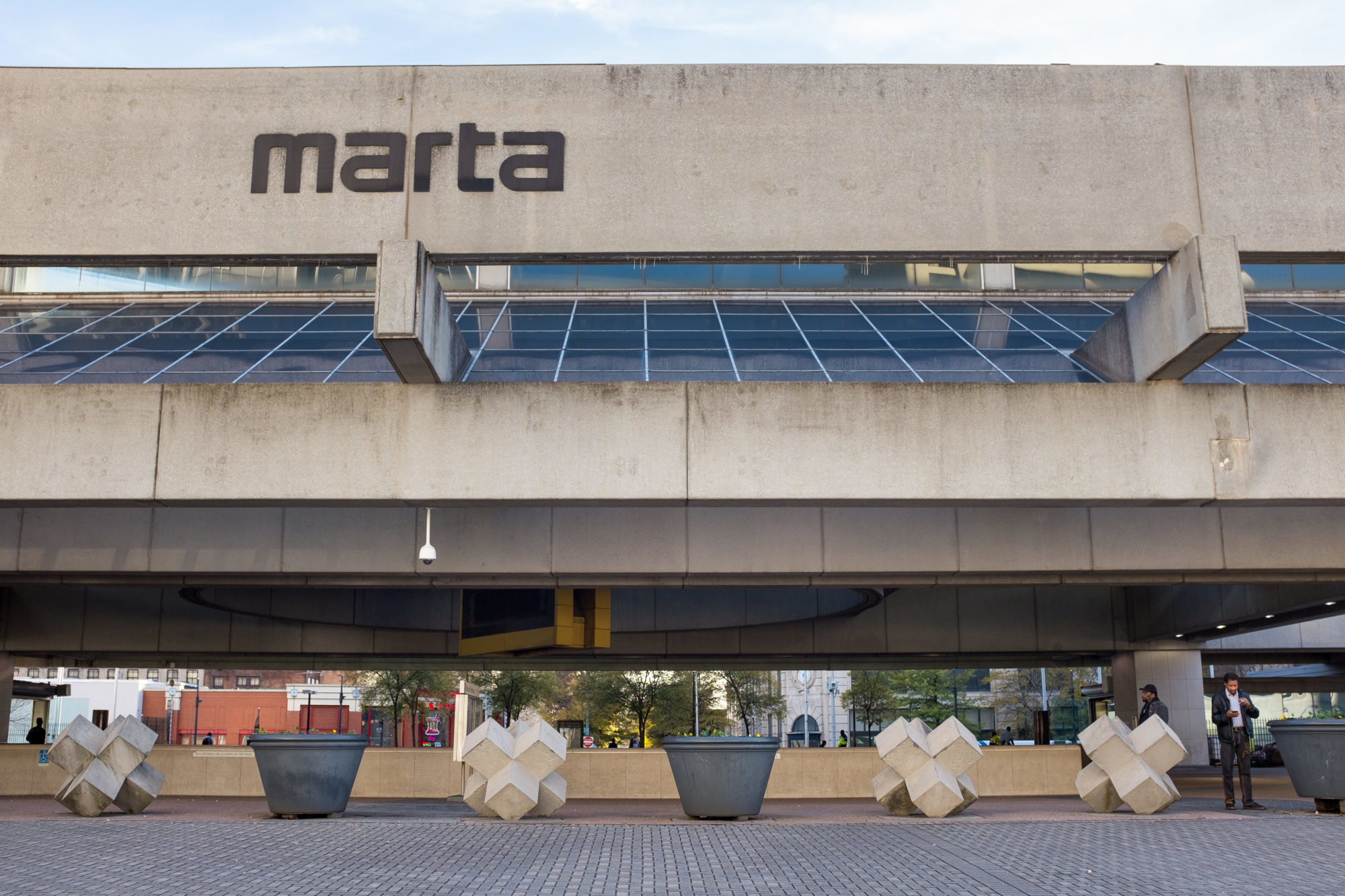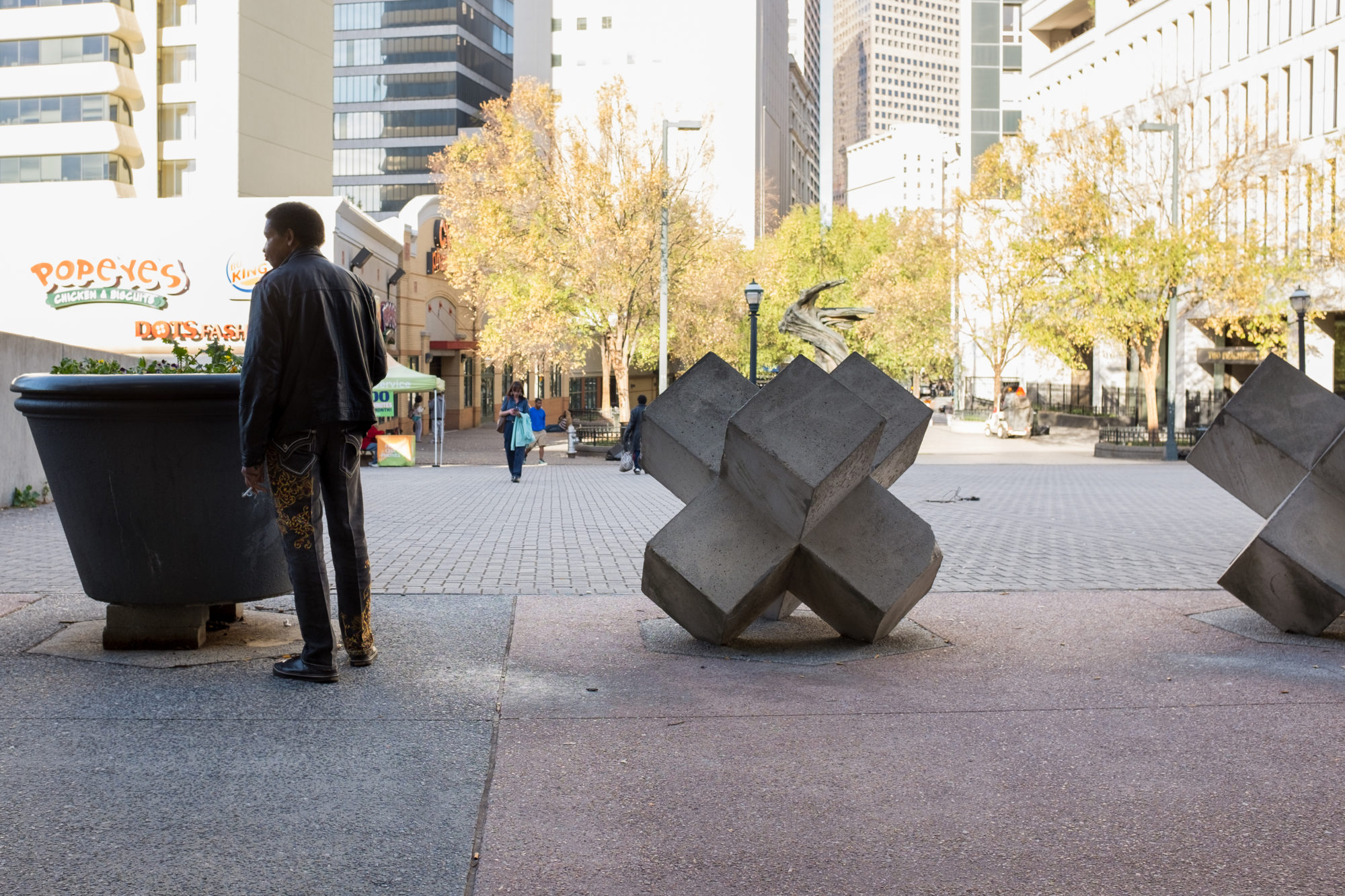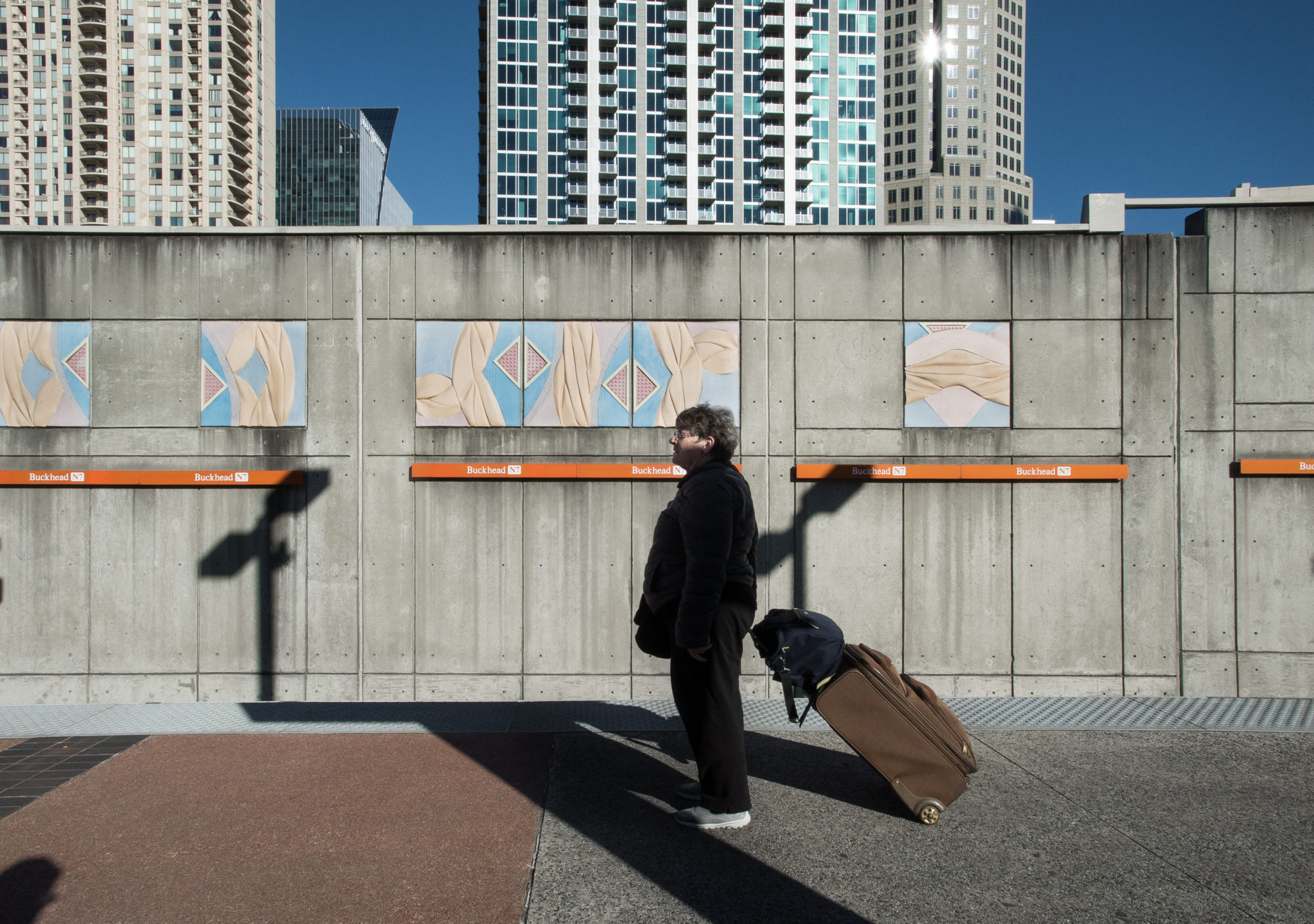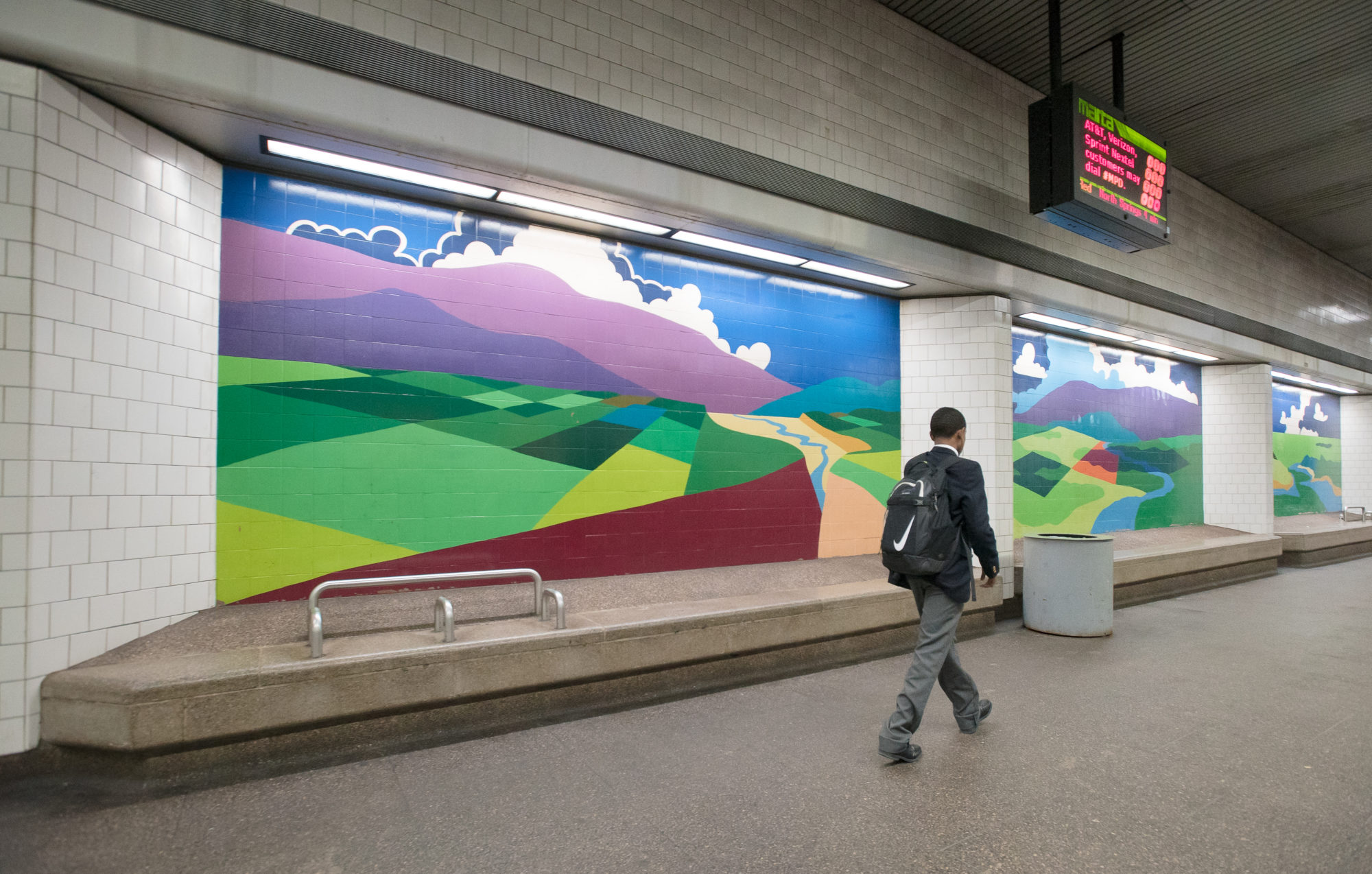
Art on MARTA
Share:
In 1979, ART PAPERS published a short article on plans for integrating artwork into the planning stages of a number of then soon-to-be-built MARTA train stations around Atlanta. The article announced the architects who had been selected for the design of each station and, in most cases, the artist(s) whose work would be commissioned as part of the process. These pairings were in some cases realized; in others, the buildings were completed, then artworks were introduced. The results of both processes are documented in the following photo essay, which turns a lens toward MARTA’s sometimes unusual, often unseen public art commissions.
The Metropolitan Atlanta Rapid Transit Authority (MARTA) was formed in 1965 with the purpose of planning a multijurisdictional rapid rail system for the region. In 1971, a referendum passed in the two central counties of Fulton and DeKalb and in the City of Atlanta. It allowed MARTA to purchase the privately held Atlanta Transit Company’s existing bus operations, and it authorized the start of rail construction, which began in 1975. Its first rail line opened just four years later, and over the two decades that followed, the system expanded to its current 48-mile (77-km) extent; together with its bus network, MARTA became the ninth-largest system in the country. Today MARTA carries nearly half a million people every day, connecting Atlanta’s periphery to its West End, downtown, Buckhead, and Decatur neighborhoods, for instance, and bringing riders to the busiest airport in the world.
The public art on MARTA offers a perspective on the role of culture in civic life at the time of the transit system’s biggest expansion—an attitude that corresponds to the boldness of station architecture in the 1970s, and its subsequent evolution toward the relatively understated structures that were built in the 1990s. Older MARTA stations invested inrobust, architecturally integrated artworks; newer ones, such as Indian Creek station, opened in 1993, seem to include artworks asafterthoughts, dropped in as comparatively inexpensive accents. The works sited in and around MARTA stations thus take a variety of forms and employ a variety of materials: Aspirations (1979) is a monumental COR-Ten steel sculpture by Saunders Schultz and William Severson located in the plaza at King Memorial Station; Labyrinth of Phoenix (1979), a work by Lev Mills located on the platform level at Ashby Station, is a glass mosaic. At Lenox, Brookhaven / Oglethorpe, North Springs, Medical Center, and Buckhead stations, relatively superficial aesthetic flourishes in the form of large single tiles or metal-based sculptural elements superimpose themselves onto existing infrastructures, where they lurk, potentially unnoticed. The overall result of these efforts is, nonetheless, a large and unique collection of public art, with no counterpart in the southeastern United States.
David Naugle is a photographer, digital media director, and native Atlantan. He helps folks tell their stories. Visit him at www.davidnaugle.com
